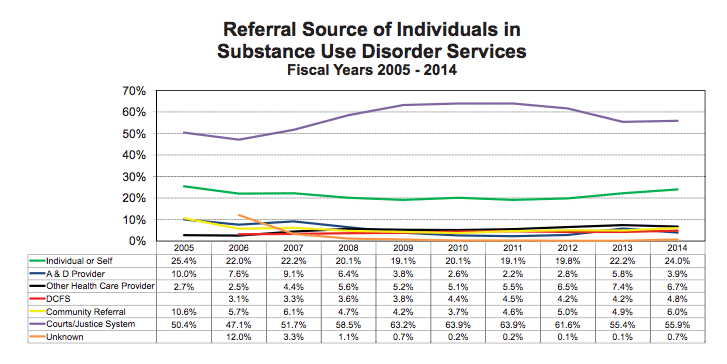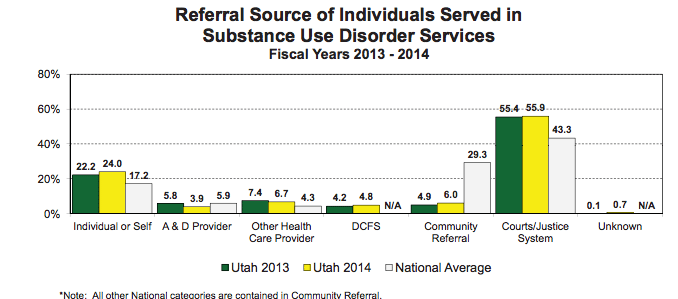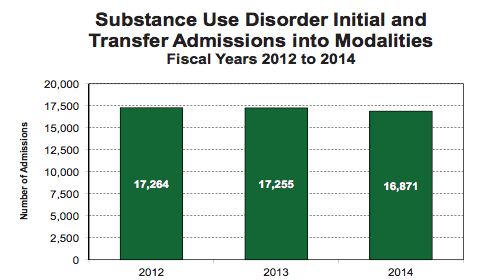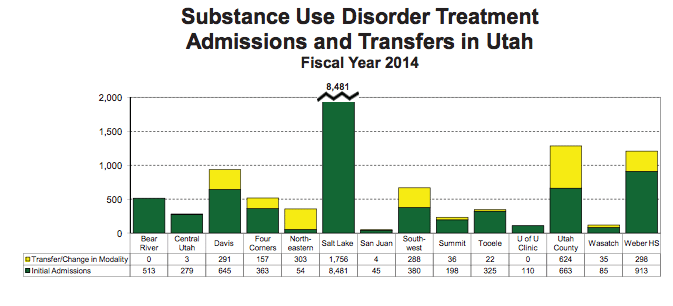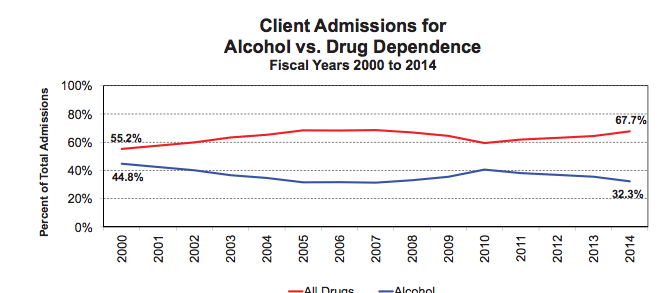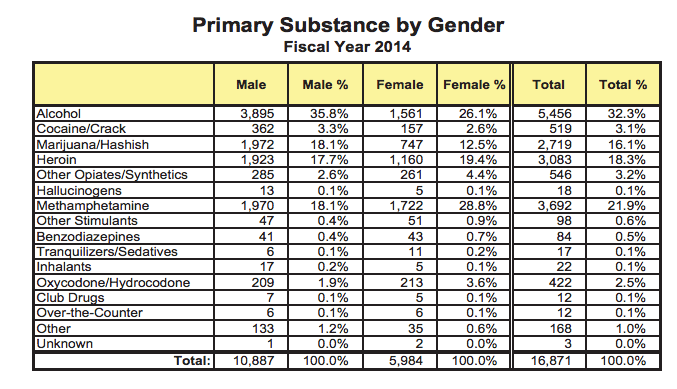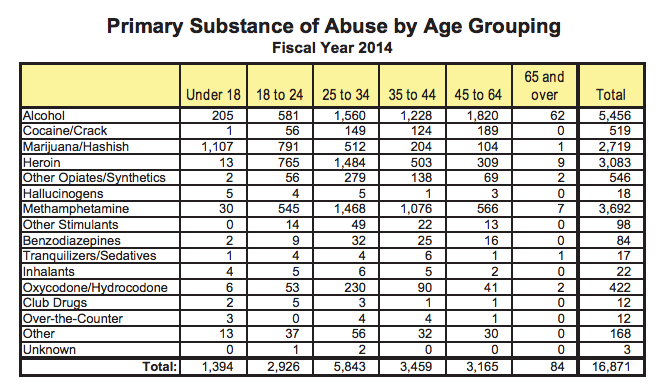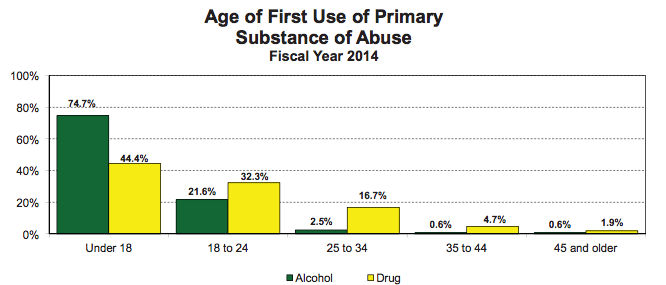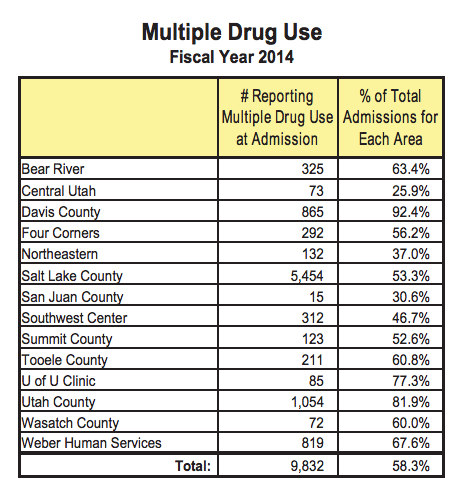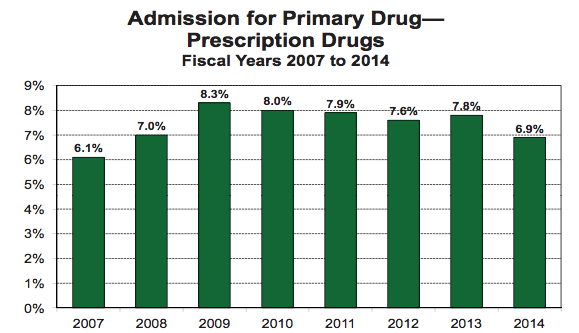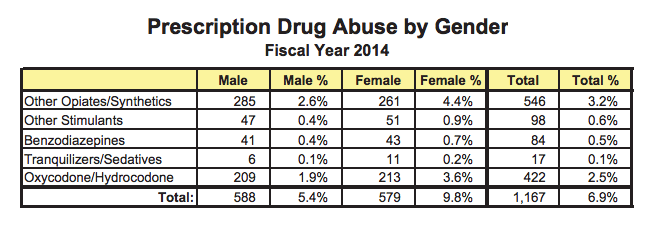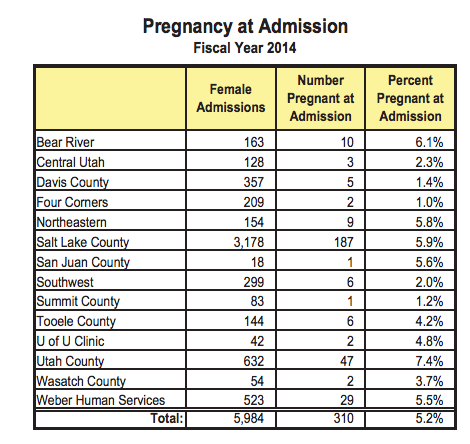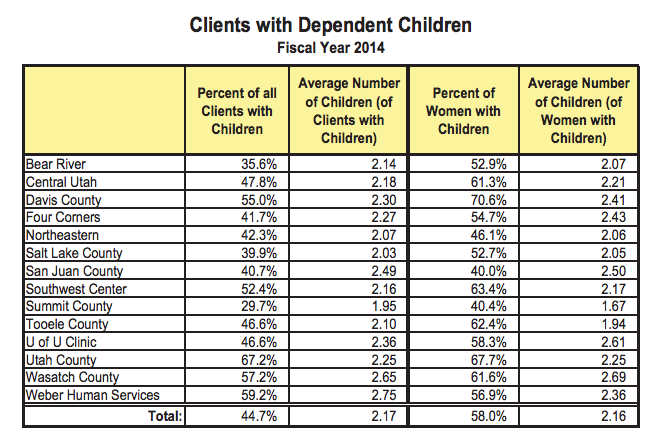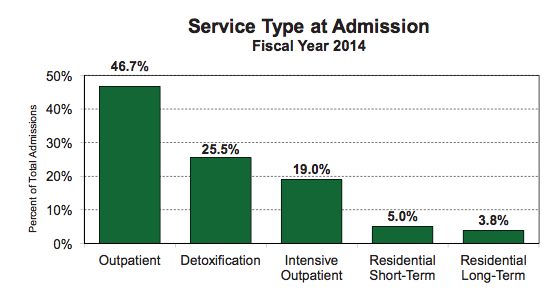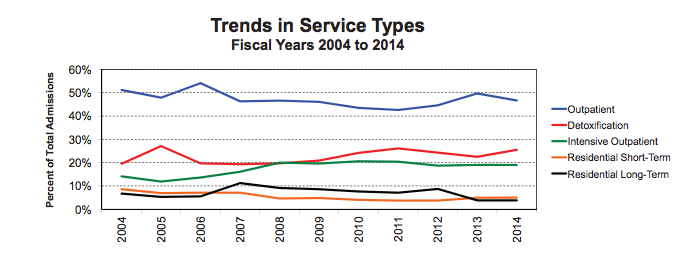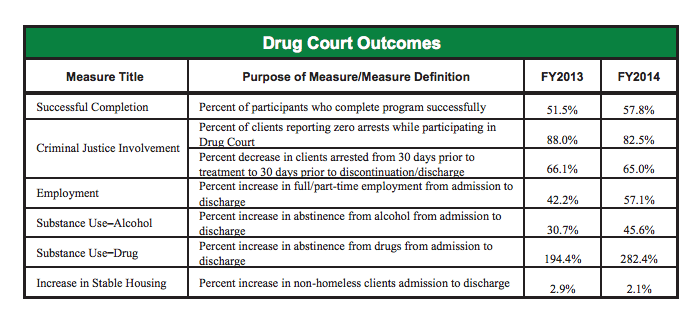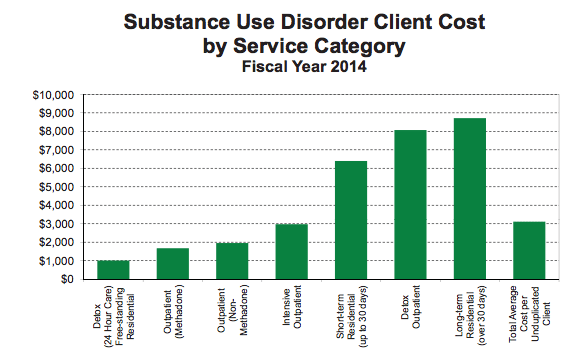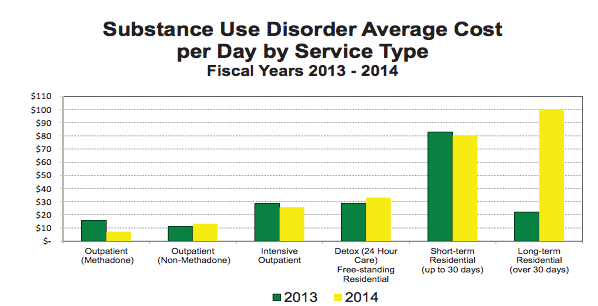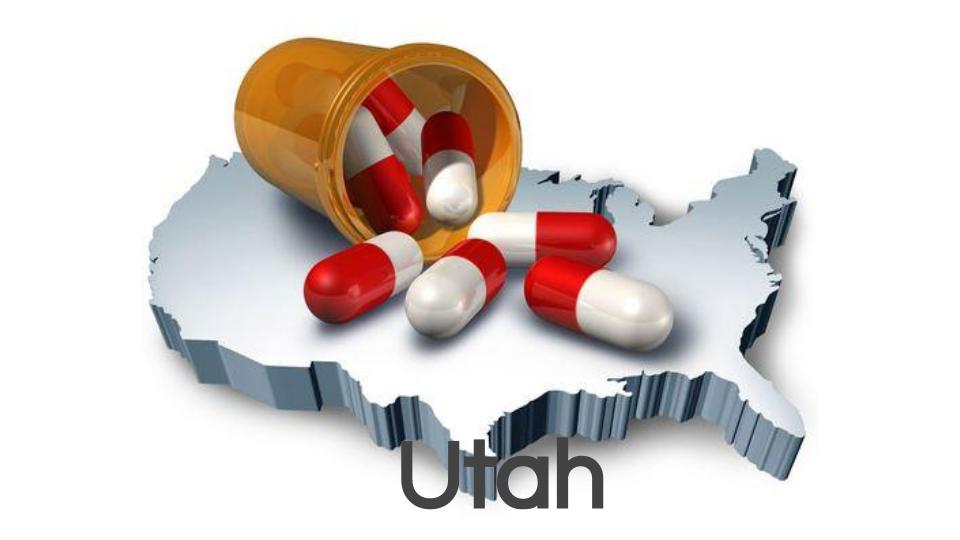STATE OF AFFAIRS: Heroin, Prescription Drug Use Prevalent, but Down in Utah
Alcohol-Related Traffic Fatalities Nearly Double
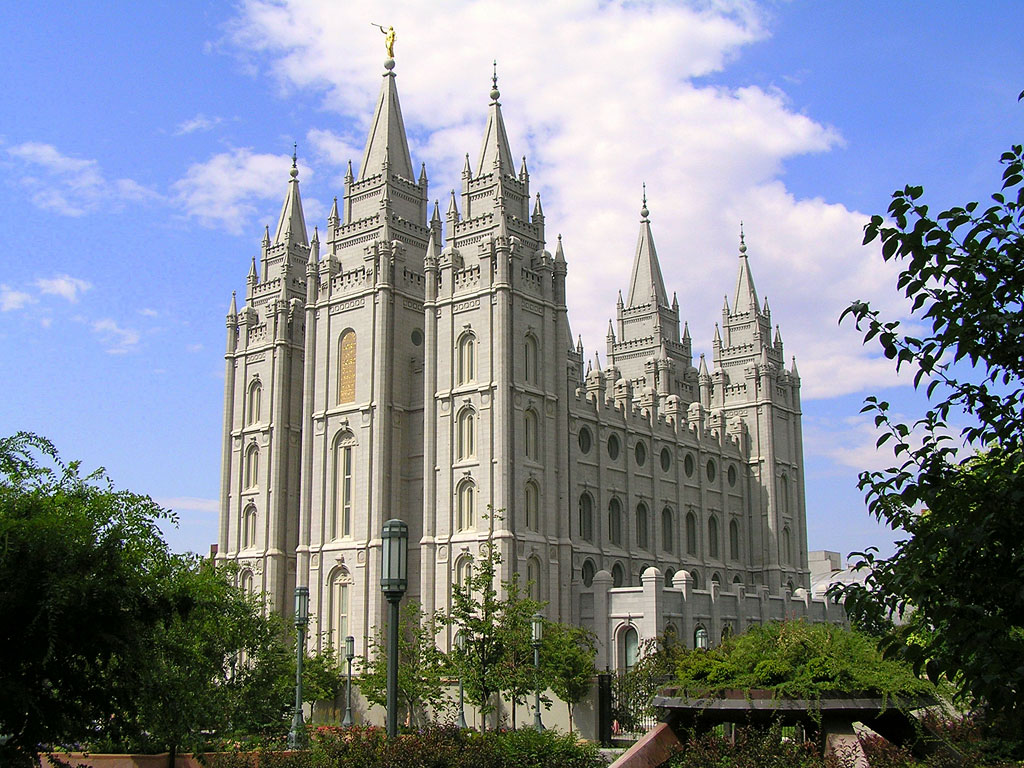 SALT LAKE CITY, Utah – Utah is one of the more affluent states in the nation and holds the title for highest literacy rate. It’s beautiful mountains set a backdrop for the driest state in the nation next to Nevada. The state has on average 300 sunny days a year. Seated at the capital is the Mormon temple, a stunning architectural design which took over 40 years to build. But in a rather efficient education system in a spiritually centered state, silent addictions manage to ravage through many of its homes. An unwanted visitor the state is working to kick out. Heroin has made a strong comeback in the past few years in Utah, as it has everywhere in the United States. The Centers for Disease Control reports that heroin overdose deaths have quadrupled in our country in the past decade. This appears to be due at least in part to the converting of prescription painkiller addiction to heroin. Utah is at a moderate level of risk at 86 prescriptions per 100 people. Pills like Oxycontin can go for $25-$50 a pill on the streets of America, when heroin can go for as low as $10-$15.
SALT LAKE CITY, Utah – Utah is one of the more affluent states in the nation and holds the title for highest literacy rate. It’s beautiful mountains set a backdrop for the driest state in the nation next to Nevada. The state has on average 300 sunny days a year. Seated at the capital is the Mormon temple, a stunning architectural design which took over 40 years to build. But in a rather efficient education system in a spiritually centered state, silent addictions manage to ravage through many of its homes. An unwanted visitor the state is working to kick out. Heroin has made a strong comeback in the past few years in Utah, as it has everywhere in the United States. The Centers for Disease Control reports that heroin overdose deaths have quadrupled in our country in the past decade. This appears to be due at least in part to the converting of prescription painkiller addiction to heroin. Utah is at a moderate level of risk at 86 prescriptions per 100 people. Pills like Oxycontin can go for $25-$50 a pill on the streets of America, when heroin can go for as low as $10-$15. 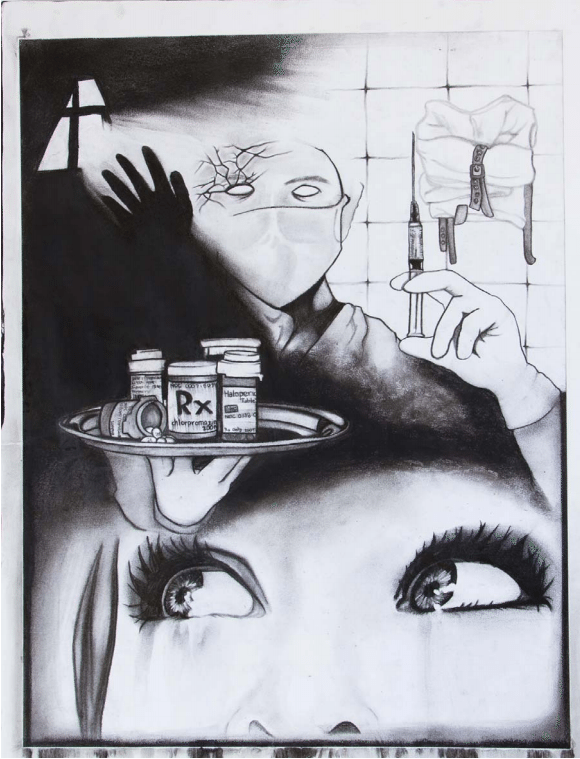 “Your mind can be an escape as well as your prison” Jessica Stoops, Ogden, UT Salt Lake County made 81 arrests for opiates in 2010. Last year they saw a 62% increase since then with 215 arrests just in that county. So far this year: 160. And the misuse has infiltrated the medical community. The State Health Department reported that nearly 5000 patients treated at a McKay-Dee hospital in Ogden might have been exposed to Hepatitis C after a nurse became contagious after allegedly stealing morphine. The state documented 84 cases in the past decade of medical professionals stealing narcotics from hospitals or clinics. Just in the last few years, an average of 50 people die each year in the state of Utah from accidents caused by drivers under the influence of prescription painkillers. Utah ranks 8th in the nation for fatal overdose deaths per capita. The National Institute on Drug Abuse estimates that over 4% of people in the state of Utah use prescription drugs for non-medical use. The same study estimates around 17% of them steal or obtain the drugs from a family member or friend. An average of 33 Utahns die as a result of prescription opioids each month. Prescription opioid deaths outnumbered motor vehicle crash deaths in 2007. 71% of those who overdosed on opioids had a substance use problem at the time of their death. Still alcoholism is even more prevalent in the state than even prescription painkiller use. Fatal DUI’s nearly doubled last year, the highest number in 10 years. Alcohol-related traffic deaths rose from 23 to 45, while drug-related traffic deaths dropped in the past year. Drunk driving was a factor in 18% of all fatal crashes last year. In 2013, Salt Lake County only had 3 fatal crashes from drunk drivers. In 2014, there were 17, killing 20 people. Of those 45 fatalities, 22 were the drunk driver, 8 were passengers, 9 were in the other vehicles, 5 were pedestrians and one was on a bicycle. 7 of those drivers had a DUI conviction in the previous 5 years. In the past decade, according to Director of the Utah Substance Use Advisory Council Mary Lou Emerson, 80% of the DUI deaths were drunk drivers or passengers. Last year that number dropped to 67%, meaning drunk driving caused more deaths to people in other cars. At the same time, DUI arrest rates are down. There were 10,802 arrests last year, 99 fewer than in 2013. The average blood alcohol content for these arrests was .15. .08 is the legal limit. According to the annual DUI Report, comprised by the Utah Commission on Criminal and Juvenile Justice:
“Your mind can be an escape as well as your prison” Jessica Stoops, Ogden, UT Salt Lake County made 81 arrests for opiates in 2010. Last year they saw a 62% increase since then with 215 arrests just in that county. So far this year: 160. And the misuse has infiltrated the medical community. The State Health Department reported that nearly 5000 patients treated at a McKay-Dee hospital in Ogden might have been exposed to Hepatitis C after a nurse became contagious after allegedly stealing morphine. The state documented 84 cases in the past decade of medical professionals stealing narcotics from hospitals or clinics. Just in the last few years, an average of 50 people die each year in the state of Utah from accidents caused by drivers under the influence of prescription painkillers. Utah ranks 8th in the nation for fatal overdose deaths per capita. The National Institute on Drug Abuse estimates that over 4% of people in the state of Utah use prescription drugs for non-medical use. The same study estimates around 17% of them steal or obtain the drugs from a family member or friend. An average of 33 Utahns die as a result of prescription opioids each month. Prescription opioid deaths outnumbered motor vehicle crash deaths in 2007. 71% of those who overdosed on opioids had a substance use problem at the time of their death. Still alcoholism is even more prevalent in the state than even prescription painkiller use. Fatal DUI’s nearly doubled last year, the highest number in 10 years. Alcohol-related traffic deaths rose from 23 to 45, while drug-related traffic deaths dropped in the past year. Drunk driving was a factor in 18% of all fatal crashes last year. In 2013, Salt Lake County only had 3 fatal crashes from drunk drivers. In 2014, there were 17, killing 20 people. Of those 45 fatalities, 22 were the drunk driver, 8 were passengers, 9 were in the other vehicles, 5 were pedestrians and one was on a bicycle. 7 of those drivers had a DUI conviction in the previous 5 years. In the past decade, according to Director of the Utah Substance Use Advisory Council Mary Lou Emerson, 80% of the DUI deaths were drunk drivers or passengers. Last year that number dropped to 67%, meaning drunk driving caused more deaths to people in other cars. At the same time, DUI arrest rates are down. There were 10,802 arrests last year, 99 fewer than in 2013. The average blood alcohol content for these arrests was .15. .08 is the legal limit. According to the annual DUI Report, comprised by the Utah Commission on Criminal and Juvenile Justice:
- 73% of those arrested for DUI were male
- 70% of arrests were for a first DUI offense
- 19% were for a second offense
- 7% were for a 3rd offense
- 4% were for a 4th offense
- 11% of arrestees were under the legal drinking age of 21
- The youngest was 14
- The oldest was 87
- The highest blood alcohol content for those arrested was .41, over 5 times the legal limit
The top selling liquor in Utah last year was Barton Vodka at $4.9 million in sales. Taaka Vodka came in second with 363,092 bottles. In the top 5 were Fireball, Smirnoff and Jack Daniels. The top selling beer was Icehouse, with about 1 million units sold. Alcohol sales have increased in the state each year since 1996, and rose 8% in 2014. 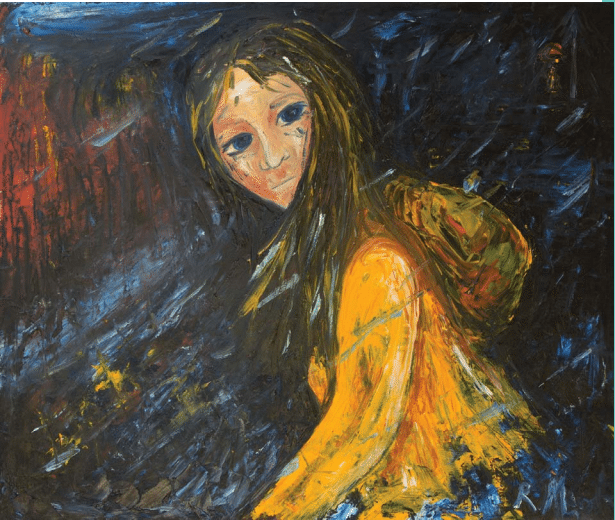 “It Gets Better” Rebecca Manchester, SLC, UT Utah has the 5th highest rate of drug overdose deaths in the country. And the state is responding. Last year lawmakers passed a bill that allows people to administer Naloxone, a known antidote to heroin overdose. Advocacy groups are working to put the drug into more hands of people in the state. A total of 111,602 vials of injectable naloxone and 28,446 vials of intranasal naloxone were provided to laypersons last year. The state still however has no needle exchange programs to help prevent the spread of disease and infections through needle transference of intravenous drug users.
“It Gets Better” Rebecca Manchester, SLC, UT Utah has the 5th highest rate of drug overdose deaths in the country. And the state is responding. Last year lawmakers passed a bill that allows people to administer Naloxone, a known antidote to heroin overdose. Advocacy groups are working to put the drug into more hands of people in the state. A total of 111,602 vials of injectable naloxone and 28,446 vials of intranasal naloxone were provided to laypersons last year. The state still however has no needle exchange programs to help prevent the spread of disease and infections through needle transference of intravenous drug users. 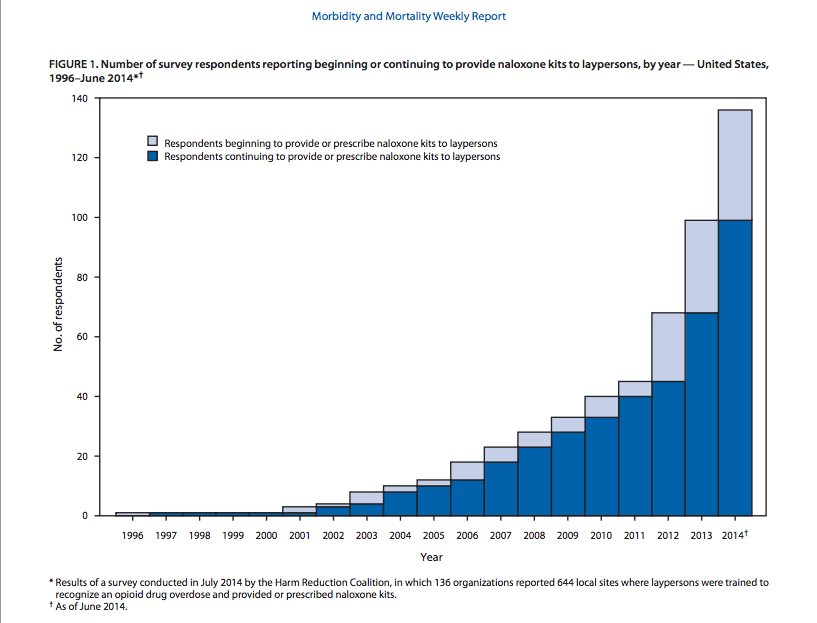
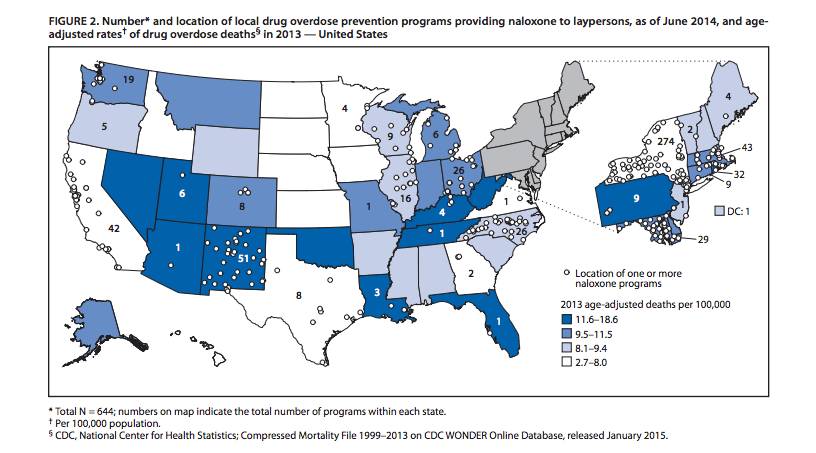 10 people a week lose their lives to suicide in Utah and 12 people are treated daily for attempts. Suicide is the 8th leading cause of death in the state, and the state ranks 7th in the nation. Suicides in the United States have increased by 25% in the past decade, while in Utah the same time frame has seen a 46% increase, almost doubling last year’s suicide rate. The Utah Department of Substance Use and Mental Health estimates that 11,391 youth need substance use disorder treatment in the state. In 2014, 75% of adults in substance use disorder treatment in Utah completed high school. 25% had attended at least some college. The state certified 175 case managers in the state last year, and now has a total of 520. Leaders say prevention is key. The Substance Abuse and Mental Health Services Administration (SAMHSA) estimates that every $1 spent on substance use prevention results in $36 in savings for states in health care costs, law enforcement and other services. As with most states in the U.S., only a small fraction of those who need heroin addiction recovery actually receive it.
10 people a week lose their lives to suicide in Utah and 12 people are treated daily for attempts. Suicide is the 8th leading cause of death in the state, and the state ranks 7th in the nation. Suicides in the United States have increased by 25% in the past decade, while in Utah the same time frame has seen a 46% increase, almost doubling last year’s suicide rate. The Utah Department of Substance Use and Mental Health estimates that 11,391 youth need substance use disorder treatment in the state. In 2014, 75% of adults in substance use disorder treatment in Utah completed high school. 25% had attended at least some college. The state certified 175 case managers in the state last year, and now has a total of 520. Leaders say prevention is key. The Substance Abuse and Mental Health Services Administration (SAMHSA) estimates that every $1 spent on substance use prevention results in $36 in savings for states in health care costs, law enforcement and other services. As with most states in the U.S., only a small fraction of those who need heroin addiction recovery actually receive it. 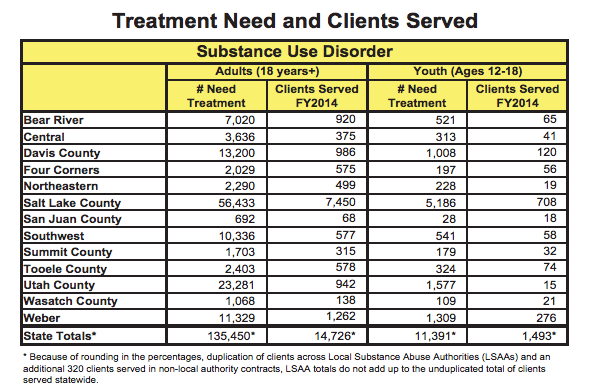
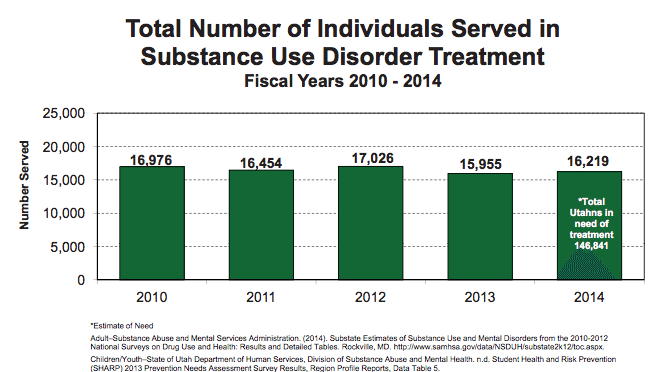 It appears the vast majority of those most in need of treatment are unemployed single white males ages 25-34 who graduated high school and live below the poverty line.
It appears the vast majority of those most in need of treatment are unemployed single white males ages 25-34 who graduated high school and live below the poverty line. 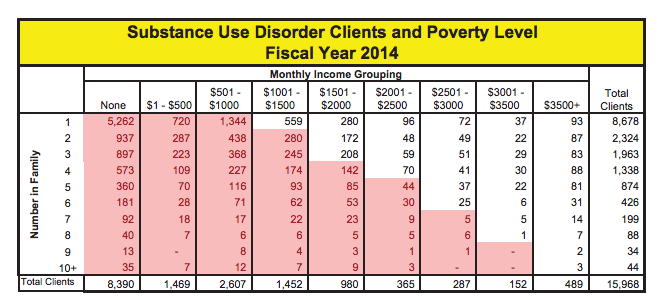
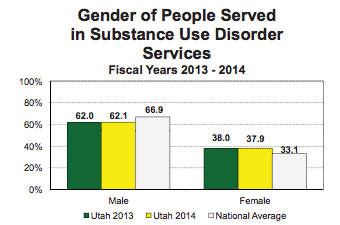
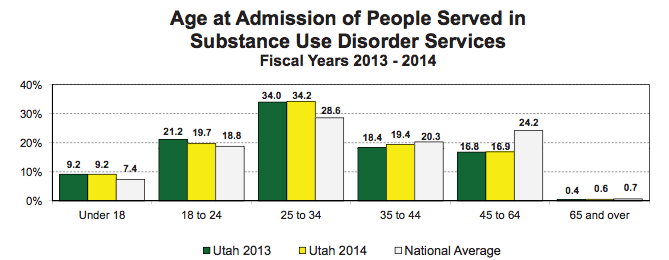
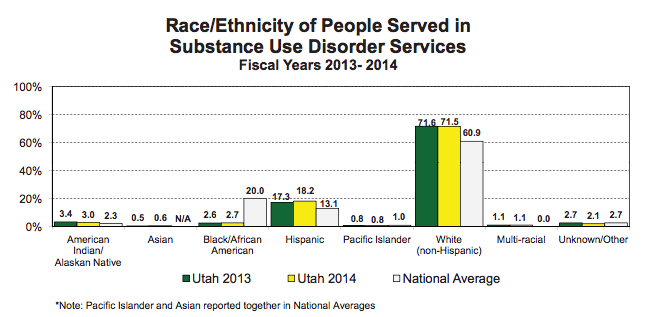
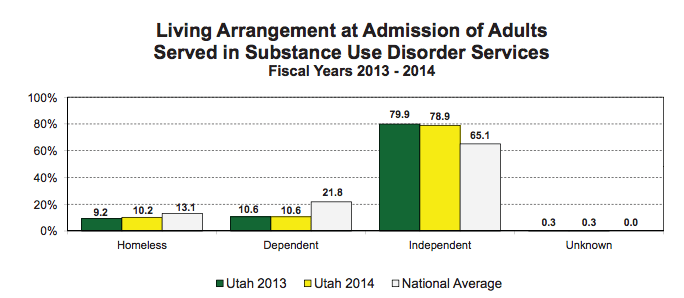
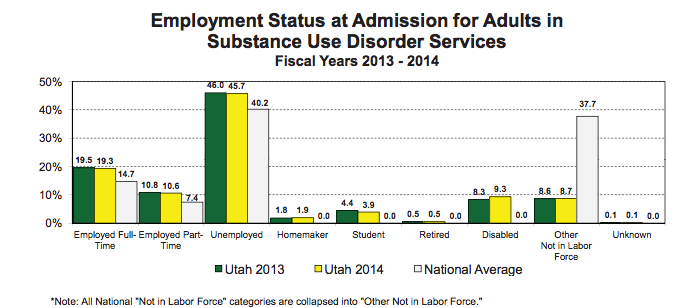
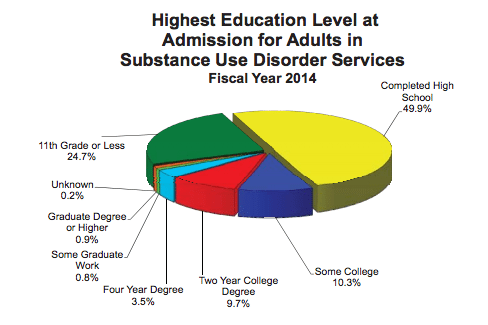
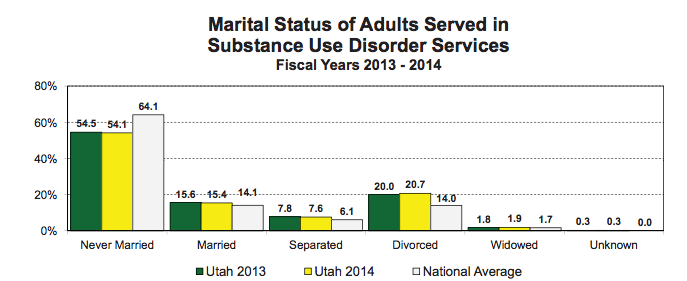 We commend Utah for getting naloxone in the hands of more people, and hope that other states in the U.S. follow suit. Addiction recovery is a bipartisan battle that crosses every socioeconomic, racial and gender divide. To keep another mother from having to bury her child, we urge communities to educate as many people as possible on how to administer this life saving drug. The following are some graphs taken from the Utah Department of Substance Use and Mental Health that show the need for more treatment in the state.
We commend Utah for getting naloxone in the hands of more people, and hope that other states in the U.S. follow suit. Addiction recovery is a bipartisan battle that crosses every socioeconomic, racial and gender divide. To keep another mother from having to bury her child, we urge communities to educate as many people as possible on how to administer this life saving drug. The following are some graphs taken from the Utah Department of Substance Use and Mental Health that show the need for more treatment in the state. 